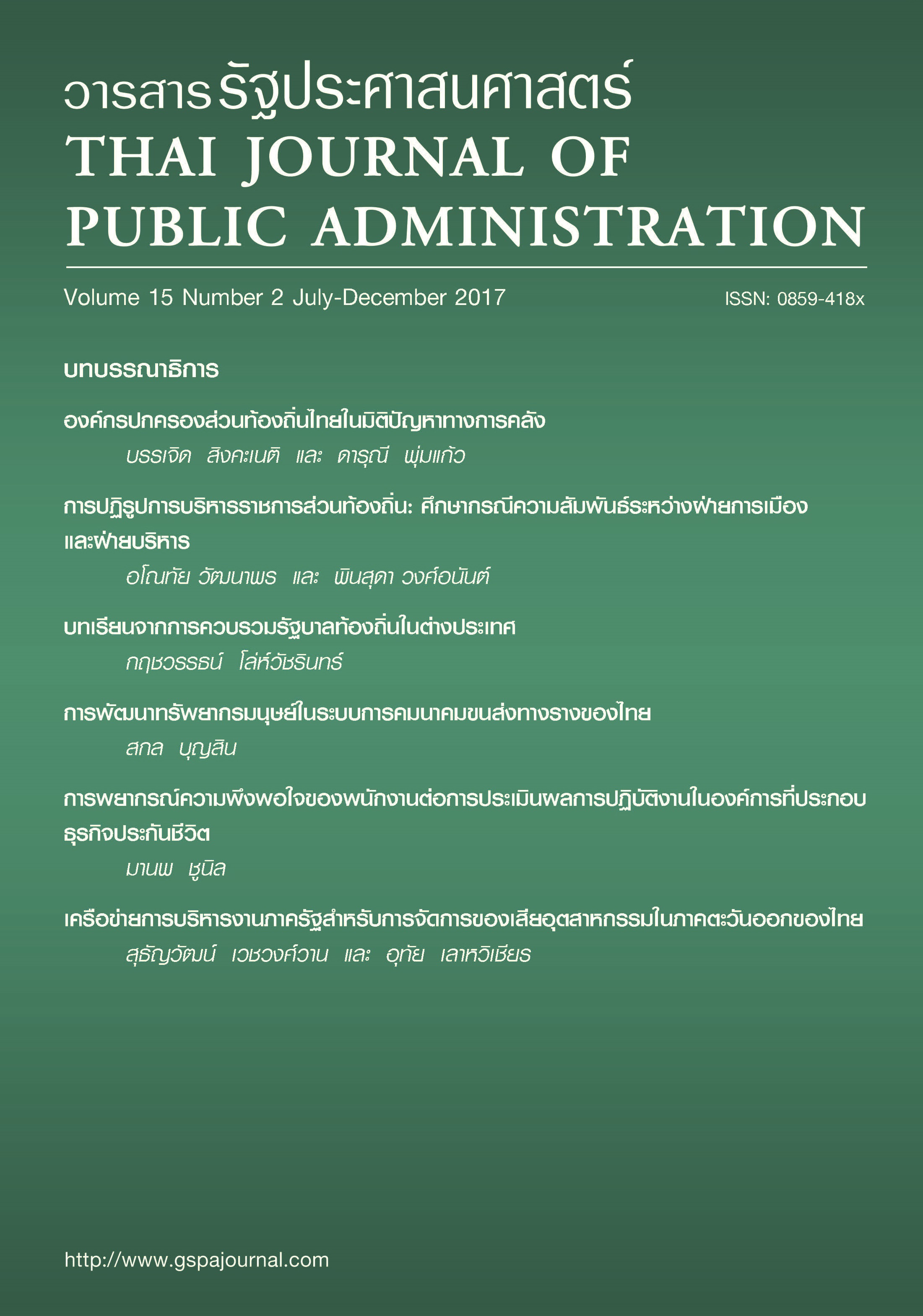Predicting Employee Satisfaction with Performance Appraisal in Life Insurance Companies
คำสำคัญ:
Satisfaction, performance appraisal, organizational justice, employee, perceptionบทคัดย่อ
This article seeks to identify factors affecting employee satisfaction with performance appraisal in life insurance companies through a mixed-methods study conducted in three phases. The objective of the first phase was to use employee perception of organizational justice and purpose of performance appraisal and employee participation in the performance appraisal process to predict satisfaction. A survey, conducted on a sample of 469 employees in life insurance companies, found that these three independent variables accounted for 46.96 percent of variance in satisfaction with performance appraisal.
The second phase consisted of in-depth interviews with 26 key informants. The objective of this phase was to study employee and supervisor opinions about the meaning of indicators that express organizational justice and methods through which the organization can be just towards employees. The study found that justice meant equity, following regulations, clear and acceptable rules, and using the same standards for everyone. Distributive, procedural and interactional justice each comprised five indicators. Organizational justice was represented in three different ways, comprising two, nine and seven indicators, respectively.
The third phase utilized an experimental design with two main objectives. The first objective was to compare employee satisfaction with performance appraisal before and after participating in a training course designed to increase awareness of organization justice. The second objective was to compare satisfaction between a control group and an experimental group, each group consisting of 13 employees. The findings indicated that for the experimental group, the difference in satisfaction with performance appraisal before and after the training was statistically significant at p≤0.01. Furthermore, after the experiment, results showed a significant difference in satisfaction level between the experimental and control groups at p≤0.01.



